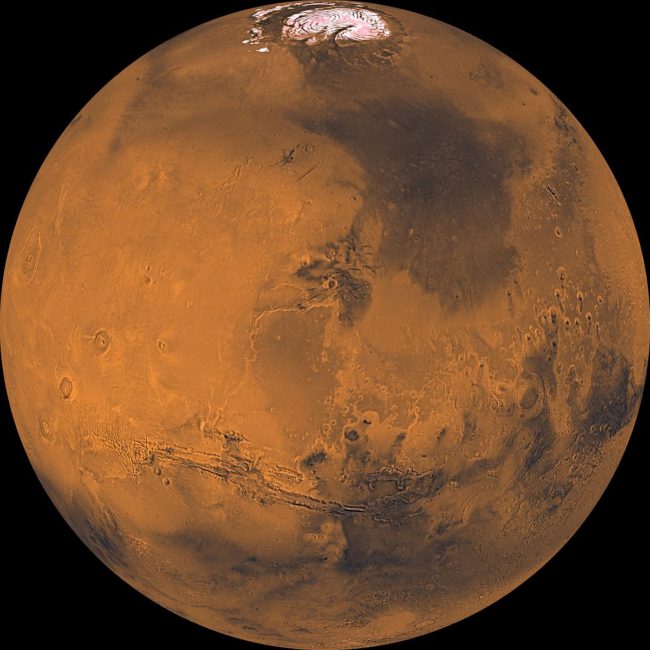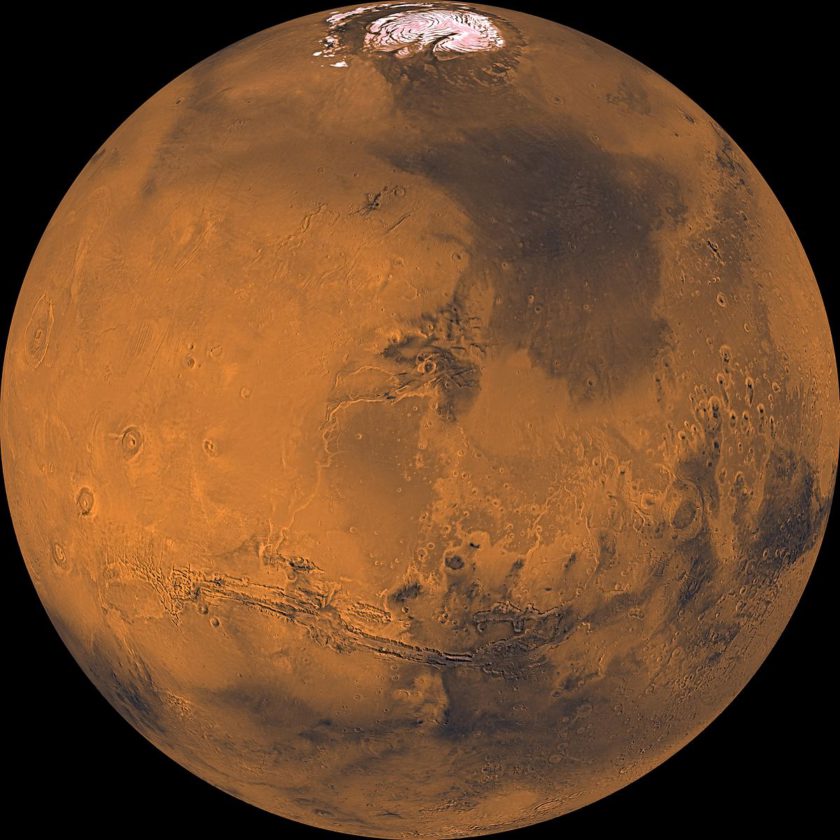
If you ever get a chance to check out “The Expanse” then go for it. The series, which current runs to five seasons, is based upon the novels by James S. A. Corey. Interestingly enough the author, Mr Corey, does not actually exist, it is a pen name used by two authors, Daniel Abraham and Ty Franck. They collaborated to create the 9 volume book series. In the novels, and also in the TV series, Mars has not only been colonised, but is wholly independent.
Is this something that might happen one day, will we actually be able to colonise Mars?
Elon Musk of SpaceX rather famously has the goal of doing exactly this. It is not simply a dream, but an actual plan. The immediate goal is to get a human to Mars by 2026. There are things here that we need not have doubts about, the plan is in action. The fully reusable super-heavy lift launch vehicle known as Starship has been in development since 2018, and so the engineering required to get there is viable, but there is a great deal more to consider.
I have very serious doubts that many of the challenges are not being fully appreciated.
Going to Mars – Factors that over get overlooked
Beyond the pure engineering of physically getting there and back, here are some of the other factors that do need to be thought through.
Radiation
Radiation in space is a real problem, so how will they shield the victims volunteers from it on the journey there and back?
I’ll return back to this one in a bit more detail further down. Needless to say, it is complicated.
Mars Air Pressure
Once on Mars, air pressure is something to seriously be aware of.
Getting oxygen to breath is of course a rather obvious issue, but it is not that simple, Mars does not just lack oxygen, it also lacks pressure. What is often not appreciated by many is that the pressure is only about 0.6% of what we find at sea level here. That is not just 6%, but is zero-point-six 0.6%.
Imagine flying at 30,000 ft and the windows blowing out – there is oxygen, but you still die because the air is too thin. Oh but wait the 0.6% pressure on Mars is not equivalent to 30,000 ft, but rather 100,000 ft, it really is that thin.
Mars Time – the slightly longer day
This one might not appear to be a big deal, but it really is.
A Mars day is 40 mins longer than ours, so no problem … right?
But wait, we know what actually happens when you switch to this time-cycle. The folks working at NASA on the Mars Science Laboratory (MSL) and other similar robotic missions, switch to Mars time. That involves starting your day 40 minutes later each and every day 9:00, then 9:40 then 10:20 and so on, it soon adds up.
Those at NASA, who switch to living on MARS time, find that they can only sustain this pattern for about 3 months maximum and then have to stop. I’ve talked to a few of them about this, it really is a big deal.
Side note: The MSL team members doing this do actually wear a special Mars time watch, I’ve seen them with it. You can also get an App for it as well, just search for MarsClock. The app was released about four years ago by a (former) rover driver on NASA’s Mars missions.
Mars Temperature
When we think of simulations of a Mars habitat, what naturally comes to mind is some remote desert location. For example the Mauna Loa mountain range on a Hawaii Island. It’s nice and warm and sunny. You can seriously apply to go on a simulated MARS mission there.
One flaw, Mars is actually very very (did I mention very) cold.
The average temperature on the surface is -81F. Note the word “Average” along with the use of the minus sign. While it can in fact get as warm as +70F in some locations in summer, that is the absolute maximum. In winter the poles can see temperatures drop to -220F. If you are going to practise living on Mars then you should be building your habitat simulator in the middle of the Antarctic in depths of winter. That gets you a lot closer to the actual reality.
This is all down to the really thin atmosphere. With no thick thermal atmosphere blanket, Mars does not retain heat.
If curious, you can read a great deal more detail on the climate of Mars via this link.
Let’s talk a bit more about radiation exposure
Getting to Mars exposes you to two distinctly different sources of radiation. Let’s briefly cover each.
Solar particles
Solar flares are a big deal. To be specific, a bath of x-rays, gamma rays, and streams of protons and electrons. Ugh!
Galactic cosmic rays
The other source of radiation is not our sun, but particles that stream in from outside our solar system (mostly from other locations in our Galaxy).
Let’s now slice this another way.
Ionising vs non-ionising radiation
Non-ionising is basically low energy. Ionising is high energy. Whack an electron with the latter and it will take that electron right out of orbit. Non-ionising does not do that because it does not have enough energy. In other words, if you think of ionising radiation as a shower of mini bullets that cut right through you at an atomic level then you perhaps can now grasp the degree of damage that can occur.
Now here is the crux of all this. You can shield on the way to Mars for non-ionising radiation, but not against the far more potent Galactic Ionised cosmic rays.
Down here on the surface we are protected from all this via the earth’s magnetic field. Venture out beyond low orbit and you really do need to think this through.
Obviously this is being considered and so we do have some insights into current thinking.
Study: Beating 1 Sievert: Optimal Radiation Shielding of Astronauts on a Mission to Mars
The above study was published recently and articulates the best way to get to Mars.
Their calculations demonstrate that the best time for a trip to Mars is during the solar maximum. That might appear to be weird, but there are two factors in play with that conclusion ..
- It is possible to shield for solar particles
- The Solar maximum results in the far more potent galactic cosmic rays being pushed away from the solar system. The increased solar activity is deflecting it.
Another interesting twist is that they also find that too much shielding is really bad.
How can that be the case?
The problem comes about because if the shielding is too thick, the ionised particles get through and then can’t exit, so bounce around inside slicing and dicing the occupants (another ugh!).
The conclusion of the paper is that there exists a sweet spot, a window of opportunity. This involves leveraging the solar maximum and also having a level of shielding that is thick enough, but not so think that it becomes a particle trap. If you are going on the trip, then you better be darn sure that the guys back home did their sums correctly. A rather interesting observation related to that is that you don’t need to be a rocket scientist to be an actual rocket scientist.
There is also one other twist to all this. You can’t shield completely, you will still receive a radiation dose, that is inevitable …
We estimate that a potential mission to Mars should not exceed approximately 4 years. This study shows that while space radiation imposes strict limitations and presents technological difficulties for the human mission to Mars, such a mission is still viable.
That’s basically enough time to get there quickly (nine months), get down to the surface, then up and back home. In other words, once you have done one trip to Mars then you have had your lifetime’s dose of radiation and can’t do it again.
I should perhaps also point out that Mars does not have a magnetic field. The radiation risk is not just for the duration of the trip there and back, but also continues down on the surface as well.
Bottom Line – Will we get to Mars?
Probably yes, but it will be very very challenging.
Elon is most probably not going to be shipping 1 million people to Mars and setting up a colony in the near future. I’d really like to be wrong about that, but alas, I suspect not.
Call me a tad picky if you wish, but getting them all there and then irradiating them on the surface is probably not a cool move. I honestly don’t see how you can have a viable colony without tackling this.
The Mars Odyssey probe detected 8000 millirads (8 rads) per year on the surface (on earth you get about 0.62 rads per year). For a visit, OK, but for a permanent colony, that’s a serious challenge.
Meanwhile, SpaceX remain undeterred. The preliminary timeline is this …
- Orbital test of Starship – Nov 2021 (Yes, next month, but that may be delayed because they need FAA approvals completed)
- Manned loop around the Moon – 2023
- Cargo mission to Mars – 2024
- Manned mission to Mars – 2026
Longer term Elon has said that he would like to see thousands of Starships depart for Mars every 26 months and so establish a colony in about 50-100 years.
We are of course pushing the boundaries, learning and adapting as we go. Magnetic shielding against radiation would be a neat solution, but we are not there yet because the power demands are currently too great. Our hardwired biological clock which is set to 24 hours is also something to contend with, as is the extreme cold on Mars and the lack of pressure. Going there is not exactly a picnic.
Having said all that, we can still dream dreams and imagine what just might be an actual reality one day. Season 6 of “The Expanse” drops on Dec 10th on Amazon Prime, so not too long a wait. (No I don’t get $$ for promoting it, I simply like the show, and thought that you might as well if you are still reading this)

First class summary! Personally, I suspect the “clock” issue is the least of them, for IMO life on Mars will mean living underground where the people can manage the “day” any way they please.
By the way, somehow I’ve gotten the impression Musk’s first missions were going to be One–Way. It’s about what I’d expect from him, for a ton of money would be saved by avoiding even the pretense he or she would be brought back to Earth.